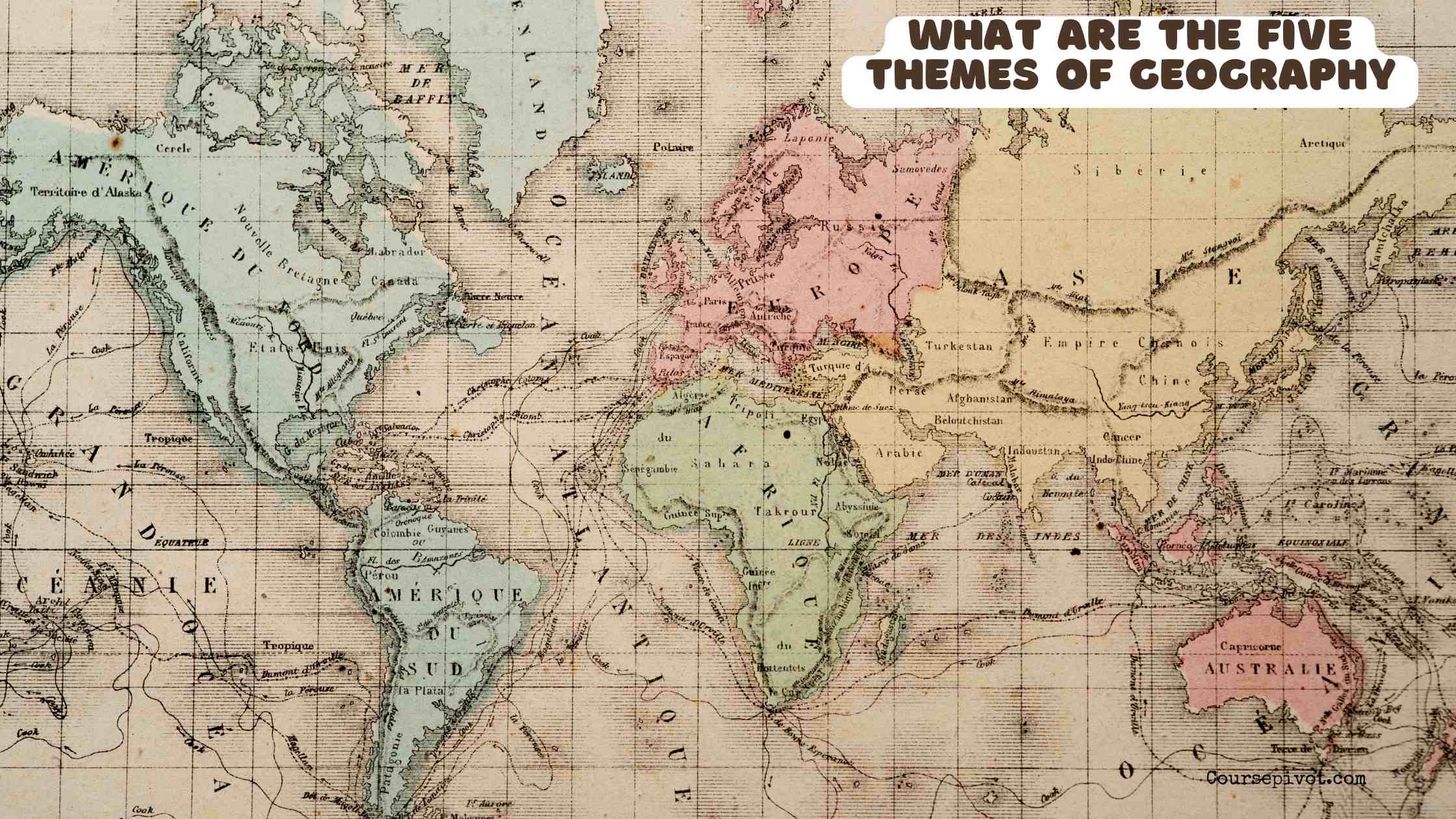
What Are the Five Themes of Geography?
The five themes of geography—location, place, human-environment interaction, movement, and region—provide a framework for understanding how people and places interact across the Earth. Developed in 1984 by the National Council for Geographic Education and the Association of American Geographers, these themes help students, researchers, and educators analyze spatial relationships and environmental dynamics. This blog explores each theme with clear explanations, real-world examples, and practical applications, empowering you to grasp geography’s core concepts and their relevance to daily life.
Table of Contents
Location: Where Things Are
Location describes where a place is on Earth, using absolute (exact coordinates) or relative (in relation to other places) terms. It’s the starting point of geography. For example, New York City’s absolute location is approximately 40.7128°N, 74.0060°W, while its relative location is “northeast of Philadelphia.” This theme helps map spatial relationships, like pinpointing a city or describing a school’s position relative to a park. Understanding location aids navigation and urban planning.
Place: What Makes It Unique
Place focuses on the physical and human characteristics that define a location, such as climate, landforms, culture, or architecture. It’s about distinct identity. For instance, the Grand Canyon is defined by its dramatic cliffs (physical) and Native American heritage (human). A city like Tokyo stands out for its skyscrapers and vibrant street culture. This theme helps explain why places feel unique, guiding tourism or conservation efforts by highlighting what makes a location special.
Human-Environment Interaction: People and Nature
Human-Environment Interaction examines how humans adapt to, modify, or depend on their natural environment. It shows mutual influence. For example, in the Netherlands, people built dikes to reclaim land from the sea, adapting to low-lying geography. Conversely, deforestation in the Amazon alters ecosystems, impacting global climate. This theme underscores sustainability, as human actions like urbanization or renewable energy use shape environmental outcomes, while nature influences lifestyles.
Movement: Flow of People, Goods, and Ideas
Movement describes the mobility of people, goods, information, and ideas across spaces. It connects the world. For instance, immigrants moving to the U.S. bring cultural traditions, while global trade ships carry cars from Japan to Europe. Digital communication, like social media spreading trends, is also movement. This theme highlights globalization’s impact, showing how interconnected economies and cultures shape societies, from local markets to international migration patterns.
Region: Shared Characteristics
Region groups areas with common features, such as language, climate, or political boundaries. It organizes the world. For example, the Midwest U.S. is a region defined by flat farmland and shared agricultural economies, while the European Union is a political region. Regions can be formal (e.g., states), functional (e.g., a city’s metro area), or vernacular (e.g., “the South”). This theme helps analyze patterns, like economic trends or cultural similarities, across spaces.
Practical Tips for Applying the Five Themes
Here’s how to use these themes in everyday life or study:
- Map Locations: Use Google Maps to find absolute and relative locations of places you visit.
- Describe Places: Journal about a location’s unique traits, like your town’s landmarks or weather.
- Analyze Interactions: Observe how local communities adapt to their environment, like flood defenses or solar panels.
- Track Movement: Notice global influences in your life, like imported foods or social media trends.
- Identify Regions: Group nearby areas by shared traits, like a “coastal region” for beach towns.
These steps make geography tangible. For example, a student mapping their city’s location and cultural traits deepened their understanding of local identity.
Why the Five Themes Matter
The five themes of geography simplify complex spatial relationships, helping us understand how places form, connect, and evolve. They frame real-world issues like climate change, migration, or urban planning, making geography accessible and relevant. By applying these themes, you can better navigate the world’s interconnected systems.
Key Takeaways
The five themes of geography—location (e.g., New York’s coordinates), place (e.g., Grand Canyon’s cliffs), human-environment interaction (e.g., Dutch dikes), movement (e.g., global trade), and region (e.g., the Midwest)—organize how we study Earth’s spaces. They reveal how people and environments shape each other. Geographer Dr. Maria Lopez notes that these themes provide a timeless lens for understanding our world, guiding informed decisions in travel, policy, and conservation.
Cite this article
You can copy and paste your preferred citation format below.
Martin, L. & Arquette, E.. (2025, September 16). What Are the Five Themes of Geography?. Coursepivot.com. https://coursepivot.com/blog/what-are-the-five-themes-of-geography/



